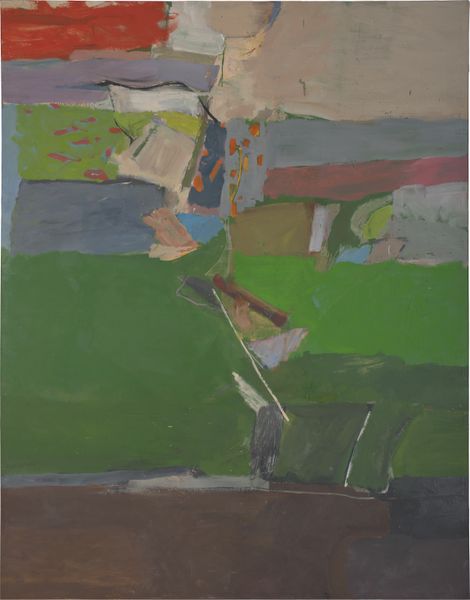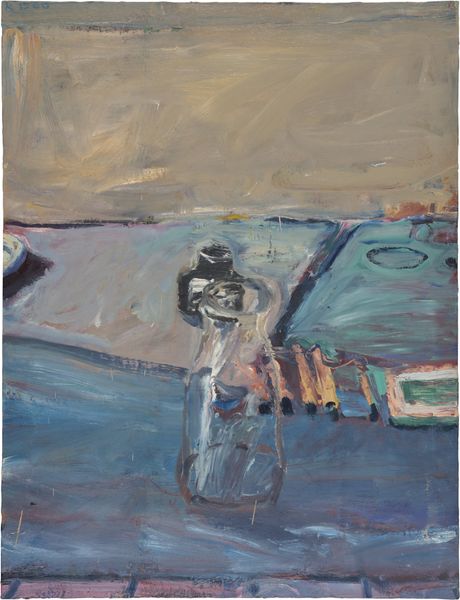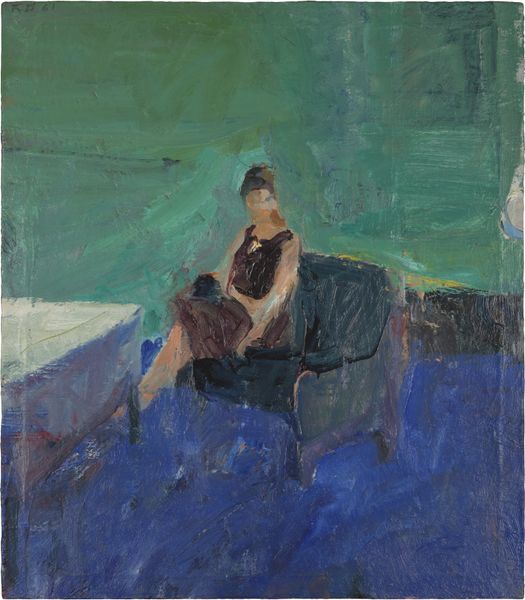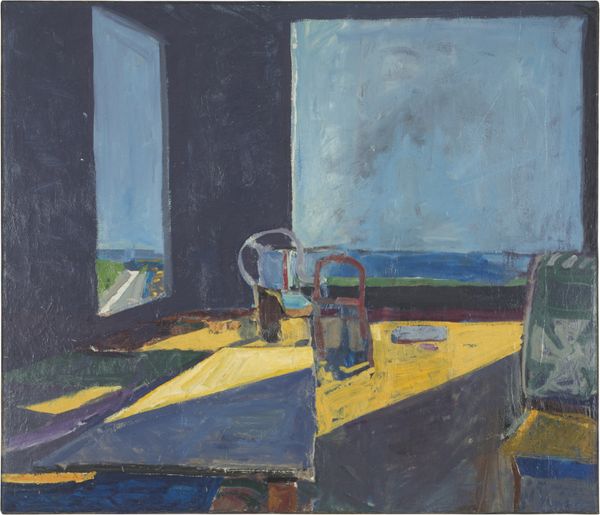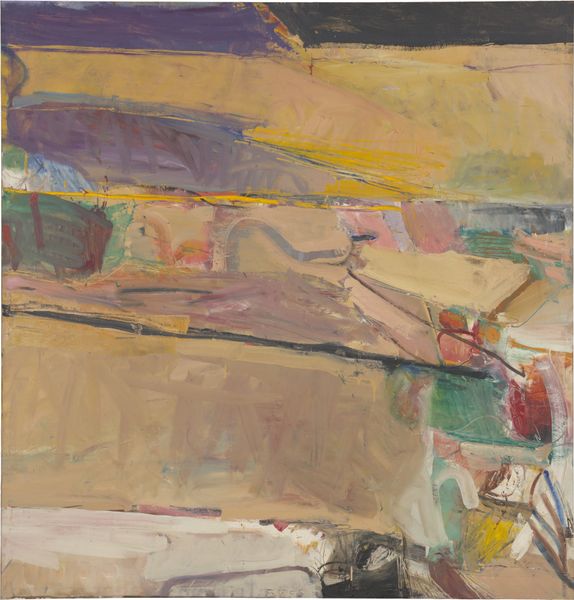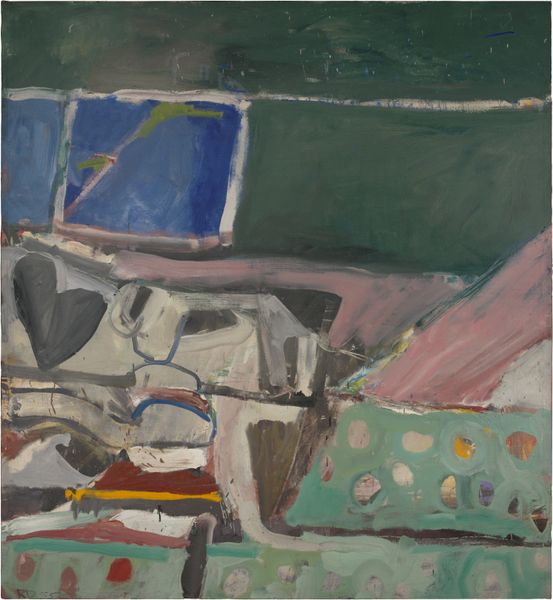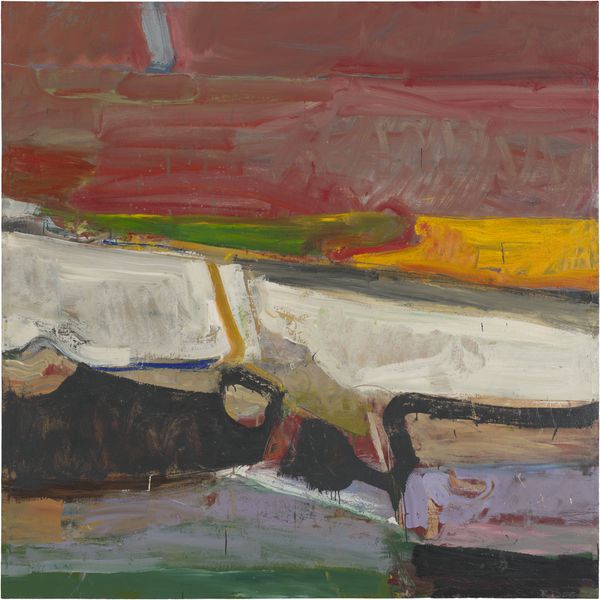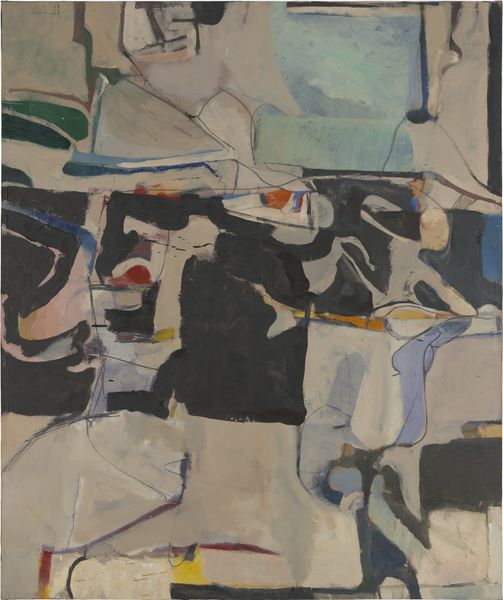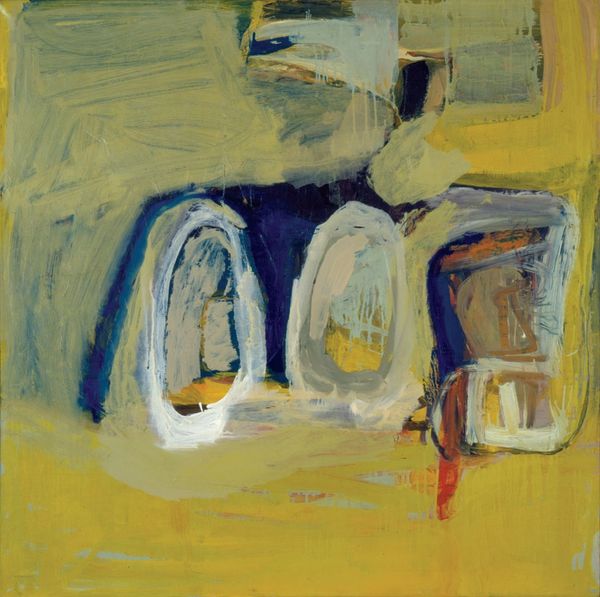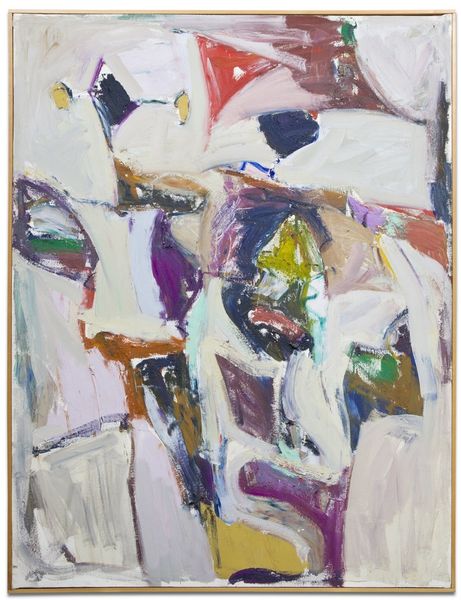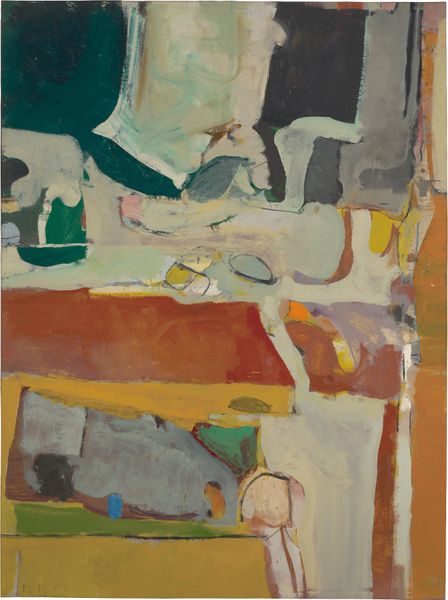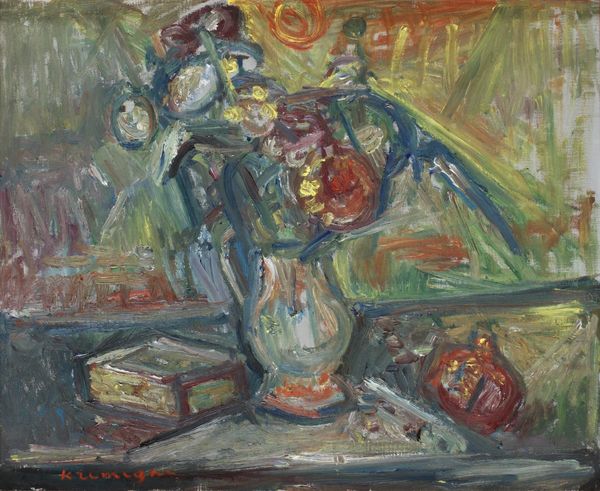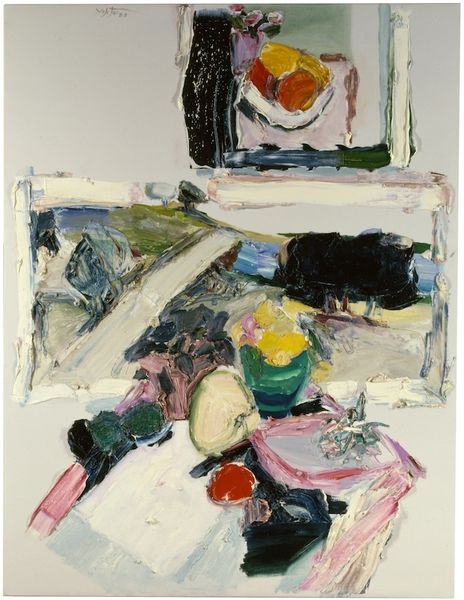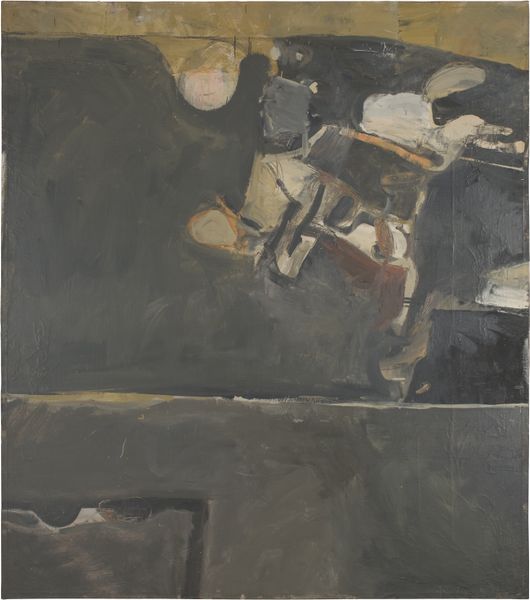
#
bay-area-figurative-movement
Copyright: Richard Diebenkorn Foundation
Curator: Let’s delve into Richard Diebenkorn’s “Interior with Flowers,” created in 1961 using oil paint. Editor: My immediate impression is of a melancholy space. The color palette is quite subdued, and the impasto technique creates a heavy, almost oppressive atmosphere. Curator: It’s interesting to consider that the artist painted it during a period of significant social change in America, one where he witnessed growing unrest among the black working classes in areas such as California, where Diebenkorn spent much of his time. It’s quite a contrast compared to the tranquility typically associated with domestic flower paintings. Could it be suggesting an anxiety permeating the American dream? Editor: Perhaps. But structurally, the painting is quite remarkable in how Diebenkorn balances light and shadow. See how the lighter hues of the floral arrangement draw the eye forward, yet the darkness behind them pushes back, creating spatial tension? The semiotic implications of shadow—what is hidden or revealed—can certainly reflect such uncertainties. Curator: That's an insightful observation. This wasn’t simply about rendering a vase of flowers; it seems that it uses the conventions of still-life to negotiate the wider turbulence of the world around it, including potential influences of artists within Bay Area counterculture movements in its subversion of expectations for conventional domestic subject matter. Editor: Indeed. Moreover, observe the visible brushstrokes. Diebenkorn doesn’t try to conceal them; rather, he emphasizes the materiality of the paint itself. The viewer is constantly reminded that this is not a direct transcription of reality but an artistic interpretation. Curator: Which invites us to examine not just what is depicted, but also how the domestic and gendered ideals are being interrogated. Flowers and interior scenes were so frequently relegated to women artists throughout the early 20th century and beyond, yet the mid-century still had a strong attachment to these conventions. How can such an aesthetic approach prompt conversations about the restrictive roles in play within that socio-cultural landscape? Editor: Absolutely. And that’s what makes this piece so compelling. It's not just a painting of flowers; it's a study in form, texture, and the dialogue between representation and abstraction, making it relevant across different perspectives. Curator: In the end, it prompts us to look closer at those details—and the world just outside the window it reflects. Editor: Precisely; an exploration of both surface and depth.
Comments
No comments
Be the first to comment and join the conversation on the ultimate creative platform.
